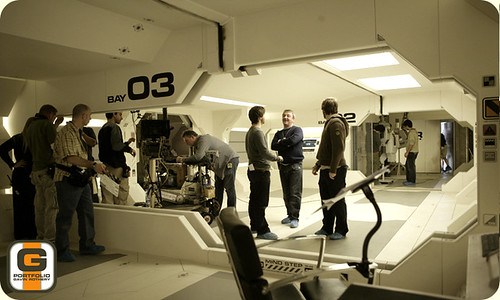A short mention of this wonderful film “Moon”, which is presently in the theaters here and there. I quite enjoyed the production design — Tom Carden pointed me to the site of the designer who created the fictional environment, giving the film a particularly lonely and somewhat constrained feeling to it, a fellow called Gavin Rothery. It seems he worked on quite a bit of the production design and visual effects, which is quite impressive.
Most of what I learned about the film and its production was found on Rothery’s site as well as a radio interview with Duncan Jones (David Bowie’s son!), the film’s director on the NPR show “Science Friday.”.
An intriguing premise of the film, set on the Moon in a vague near future, is this design fiction in which helium 3 is mined from the far side of the moon and then sent back to earth at regular intervals. The material is mined in a semi-autonomous fashion, with one guy — a sort of blue collar near future industrial worker — minding the shop, together with this robot/ship computer with an articulated arm, Kevin Spacey’s voice, and a smiley face icon for a emotive display, which is intriguing. This is only the second example of a computer voice in a science-fiction film that is a man I can think of besides HAL. But, I could be wrong. Most of them seem to be women — more on this at a later post. But it won’t be a rant.)
If you listen to the full NPR radio interview with Director Duncan Jones, he remarks about how he was asked by some people at NASA to screen the film for them and how they latched onto this notion of helium 3 mining — something being explored as “real science” — and used the moment of the exhibition as a pivot-point for an impromptu debate amongst themselves, with the director just sitting there.
Why do I blog this? That moment of the screening is something I am intrigued by mostly because of this possibility for a science fiction film, and especially its props (as in this narrative vehicle of the helium 3 mining, which gives enough of a purpose to the film to move the story along effectively) to become conversation pieces — objects and stories and characters which are able to incite discussions about the possibilities of things and how to get from here in the present to there in the future, or to avoid such futures, or whatever. But, as discussion points and lessons and motivations for debate. This is the special effect of well-crafted designed fictions.
